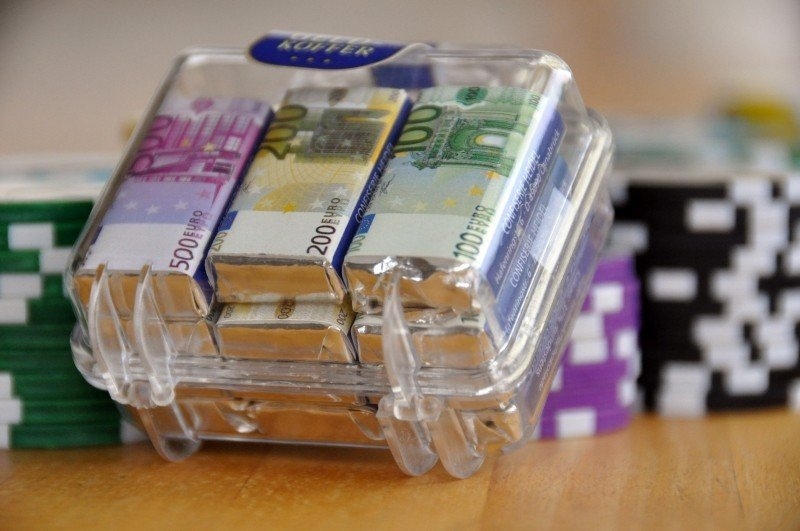Unknown until a few years ago, the 'Inbound Marketing presents itself as the real alternative to "push" Marketing, sometimes criticized for its aggressive approach.
To fully understand this new methodology, it is necessary to become familiar with a number of terminologies or acronyms, most often from English.
To help you, we have written a small dictionary gathering the main terms to know around Inbound Marketing!!
If you would like definitions of other terms, let us know in the comments and we will gladly add them.
A/B testing
This is a technique used in digital marketing to optimize the quality of a website, a visual or an emailing. The principle and to test at the same time two different versions (A and B) on the same functionality, changing a single variable (for example a color or a formulation). After this real-world testing, the better of the two versions is implemented.
Atawad
This is an acronym for any time, any place, any device. It is used to show an evolution of society and technology where individuals have the desire and habit of being able to access content anytime, anywhere and on any device (computer, mobile, tablet). At the end of the acronym we sometimes add the letters " AC " for "any content" which means " any content ".
Buying lifecycle
This is the buying journey of a customer. This journey is divided into three major stages: discovery (awareness), evaluation (consideration) and decision (decision).
Bottom of the Funnel (Bofu)
This is the last step in the conversion tunnel. The company wants to convert qualified leads into customers.

Buyer persona
A persona is the fictional representation of a company's target customers. The persona concept helps marketing departments better understand the specific issues of their targets and how they articulate them on digital channels.
Call-to-action (CTA)
The call-to-action is a call to action. In most cases, it is a button or banner that can be clicked on and links to a Landing Page.
Here is an example of a Call-to-action (a real one!) :
CMS
This is an acronym for a "content management system". In other words, it is a tool for managing content. A CMS is used to create and publish documents on the internet, such as WordPress to manage a blog.
CMSs geared toward content optimization and conversion like the Hubspot are called COS for Content Optimization System
Customer journey
It illustrates the customer journey and all of their interactions with the brand across all channels used (referred to as "touchpoints").
Content marketing
The content marketing is a strategy that the company implements to create and share content in order to attract new customers.
This content, whether useful or fun, can be in the form of news, videos, white papers, e-books, infographics, case studies, how-to guides, quizzes, photos, forums, company blogs, etc. Content marketing is developing mainly with the help of digital channels and to meet the new behaviors of customers who are increasingly connected.
Premium content and Content Offer
Premium means " high quality ". Premium content includes all the content that will allow the company to turn its visitors into leads. More specifically, when we talk about the content that can be accessed only after filling a form on a Landing Page, we use the term Content Offer. Visitors become leads the moment they access the Content Offer.
.
Conversion rate
Conversion rate is a percentage showing the effectiveness of a page or website. It is calculated at each phase of the conversion funnel (Tofu, Mofu and Bofu). In the Tofu phase, the conversion rate refers to the number of visitors who gave their personal information by filling out a form (and thus become leads) divided by the number of visitors to your website or blog. In the Mofu phase, the conversion rate is calculated by dividing the number of qualified leads by the total number of leads. Finally, in the Bofu phase, the conversion rate is calculated by dividing the number of acquired customers by the number of qualified leads. In the latter case, the term " conversion rate " is more commonly used.
Cross selling
This involves selling an additional/complementary product or service. This is also referred to as cross selling as in the case of insurance in addition to a product for example. The marketing automation is often used to optimize cross selling activities.
Customer Relationship Management (CRM)
These are software packages that capture, process and analyze prospect and customer information to optimize the work of sales teams. The end goal is to ensure a more effective customer relationship. Marketing automation must be used with the company's CRM to be able to ensure alignment of marketing and sales activities.
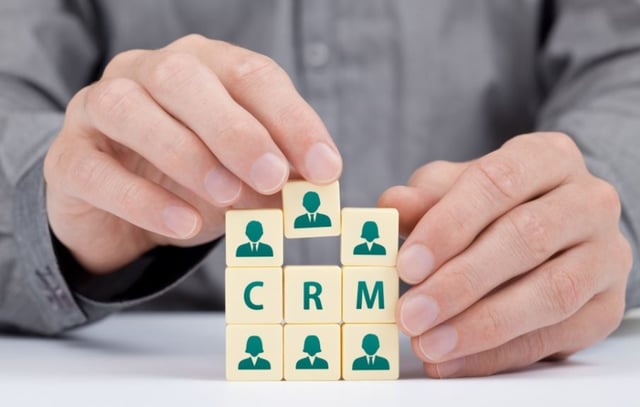
Earned Media
Literally, this means "earned media." It is all the content that has not been generated directly by the company but from which it receives free (buzz, conversations via forums, blog posts, Wikipedia pages, tweets, as well as interviews and stories in the press, etc.). It is also about conversations and user-generated content. Earned Media" allows the reinforcement of the brand's credibility. It can also become a good argument for B2C sales when it comes to positive feedback from the consumer. The only problem with Earned Media : a brand can never have a real control over this kind of content (for example in the case of negative comments).
.Funnel (or tunnel) marketing
Funnel means "funnel" in English. In Inbound Marketing, it refers to the conversion tunnel. It is the different steps that will allow a company, via its website, to create traffic, convert a visitor into a lead and then into a customer.
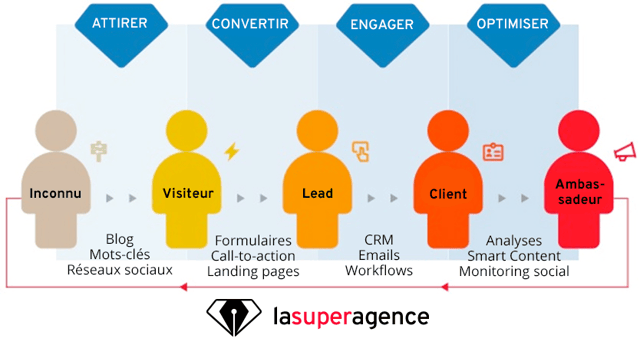
Growth hacking
This is a set of techniques imported from Silicon Valley that have as their main goal to foster growth using low-cost, creative, clever and agile processes. The term Growth Marketing is also used, to avoid association with computer hackers.
lnbound Marketing
As opposed to Outbound Marketing, which sends "push" messages to prospects, Inbound Marketing is about attracting ("pulling") the customer to yourself by delivering visible, accessible, and useful content to facilitate prospect conversion.
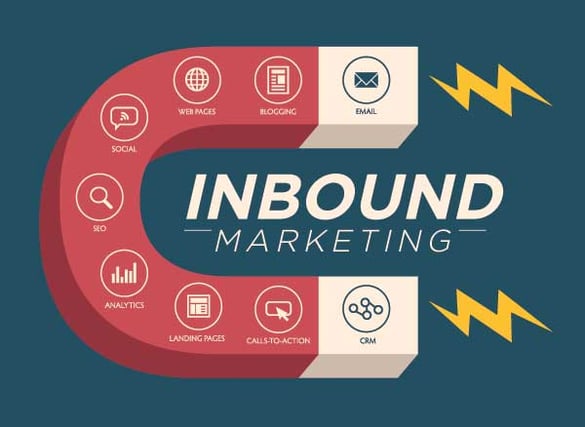
Landing Page
This is a landing page that is central to the conversion process. It helps turn visitors into leads, making available premium Content Offers in exchange for a form collecting certain visitor information.
Lead
This is a prospect who signals interest in a brand's products or services by passing on their contact information.
Lead generation
This is the Marketing term for the detection actions and signals of interest of a potential customer on products or services of a company. These signals are characterized in several ways : phone call, web form, interaction on an email or social network, participation in various events. We also use the term " Lead gen ". Lead generation gathers all the actions we put in place to produce leads.
Lead nurturing
This is the step of maturing leads in the conversion tunnel. The goal is to nurture leads until they are sufficiently qualified for the sales team.
Lead scoring
This is the act of assigning a score to leads based on demographic (industry, company size, responsibility) and behavioral (page views, downloads, sign-ups, etc.) criteria. It is through the scores that we know the qualification level of a lead.
Long Tail
This is the fact that a significant portion of sales are made by selling a large number of products with very little turnover. This phenomenon is often seen in SEO, traffic can come from a large number of keywords, where each of them are very little used.
Marketing automation
This is all the techniques and means used to send, in an automatic way, targeted and personalized messages to prospects according to criteria and a message structure set up beforehand. This method aims to optimize the conversion rate of prospects by sending the right message, to the right person, at the right time.
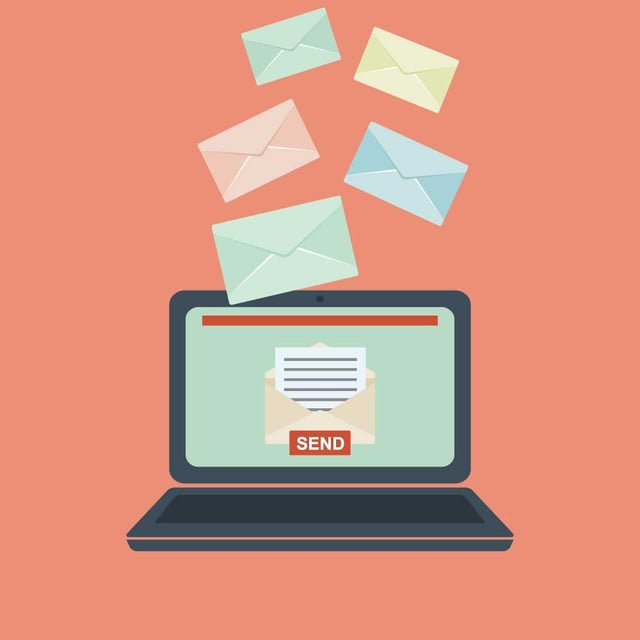
Marketing Qualified Lead (MQL)
This is a lead that is qualified by Marketing actions. A lead is considered qualified when there is a high probability that it will become a customer. From the point of view of lnbound Marketing, it is the actual behavior of the lead that will allow us to give him a score. When he reaches a certain score, he is considered qualified and therefore ready for an approach by the sales team.
Media snacking
This is a new societal phenomenon linked to the digital mutation that prioritizes short, quick-to-consume content. From this mutation, brands are prioritizing Snacking Content which aims to create short content, going straight to the point.
Middle of the Funnel (Mofu)
This is the intermediate stage in the conversion funnel. This stage consists of deploying the various techniques that will move prospects from the discovery stage to the scoring stage.
Native advertising
It is a form of advertising that involves incorporating branded content into a medium. This model has developed because traditional advertising has shown its limitations. This new form of advertising will allow the brand to show its expertise through relevant content and without directly advertising the products it sells.
It is not strictly speaking an Inbound Marketing technique even if some agencies promote it as such.
Owned Media
We're talking about content that the company makes itself (brochure, newsletter, customer magazine, website, Facebook page, press release, blog, event, packaging, etc.). The strengths are numerous: control and accuracy, lower cost in the long run, durability, better interaction with the intended targets. This content has become indispensable in the digital age. The major disadvantage is that they are time consuming and require new skills. They need to be implemented over the long term to be relevant.
Opt-in, opt-out
These are two ways to obtain user contact information, and then use it for marketing purposes. The opt-in method, allows collecting the user's data with their formal consent while with the opt-out method, the user's data is taken automatically unless they explicitly issue a wish that it not be collected. In Inbound Marketing, opt-in acquisition is always preferred.
.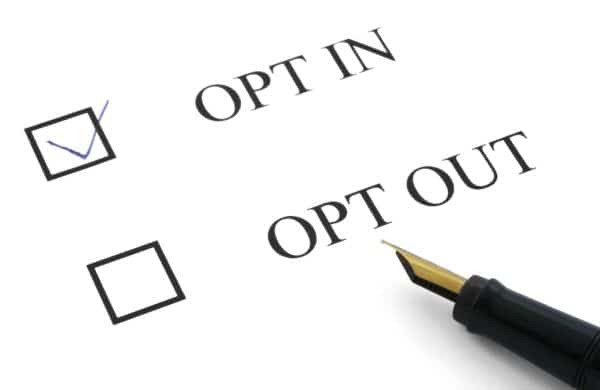
Paid Media
This is the content that the company buys from the media (press ads, TV spots, posters, web banners, participation in trade shows, but also Adwords, SEA, etc.).
Paid Media allows for control over campaign timing, content, distribution, speed of implementation and, most importantly, measuring impact in terms of results. The disadvantages are the cost of this content as well as the public's growing distrust or disinterest in traditional advertising and the lack of interaction with the company's targets.
Permission Marketing
This concept, coined by Seth Godin, demonstrates that marketing campaigns are most effective when the company obtains the prospect's permission before delivering a message (opt-in). The prospect does not view the brand's message as intrusive, so they will be more open and more likely to engage.
POEM
Sigle of "paid, owned, earned media", this concept separates media into three categories: purchased media (paid media: advertising), owned media: for example one's website, blog, social networks) and earned media: for example press coverage and buzz.
Retargeting
Retargeting is the act of "retargeting" advertising to a customer or prospect based on their interests and online behaviors. This is the case when a prospect visits a product page, but ultimately does not buy anything during his visit. We can then "retarget" this prospect/customer on third-party sites via banner ads or directly via email marketing.
Sales Accepted Lead (SAL)
A Sales Accepted Lead is a Marketing Qualified Lead that the marketing team passes on to the sales team. The latter must then verify based on certain criteria whether they accept or reject it. If the lead is validated, it enters the pure sales process.

Search Engine Advertising (SEA)
As opposed to SEO, Search Engine Advertising consists of buying keywords (mostly at auction) in order to gain visibility in search engine results or on social networks. This is also known as "Paid Search."
Search Engine Marketing (SEM)
Search Engine Marketing covers all of the Marketing techniques used to increase the visibility of one's brand and solutions on search engines. The two main branches of Search Engine Marketing are SEO and SEA.
Search Engine Optimization (SEO)
The Search Engine Optimization represents the set of so-called "natural" techniques (as opposed to paid techniques) that aim to optimize the visibility of a website on search engines. A site is considered to be well positioned when it is in the first ten results of a search engine, on a relevant keyword.
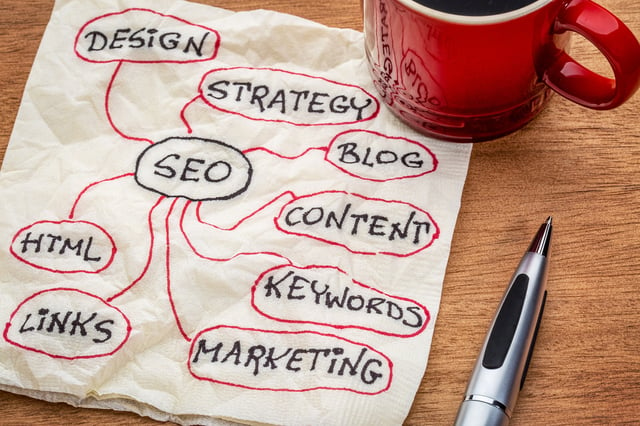
Smart Marketing
The term comes from the word " smart " which means clever. It is a process that seeks to improve the integration of sales and marketing activities. His goal is for these two activities to follow a common approach with the same tools and objectives in order to increase the company's revenue.
Social selling
These are all techniques using social media in sales activity. The analysis of prospects' behaviors on digital channels (social media in particular) is very rewarding for sales departments. In order to increase their visibility and gain the trust of their targets, salespeople must be present on social networks and must be able to participate in discussions. It has become almost essential today for sales people to be proactive on social media in their sales activities.
.Top of the Funnel (Tofu)
This is the first stage of the conversion funnel which represents the lead generation process: it consists of creating traffic to one's website, blog or social media and converting that traffic into a lead. At this point in the process, the target is in the discovery phase (awareness).
Trigger email
This is automated email marketing (or transactional email) that helps to better respond to the behaviors and responsiveness expectations of web users. A number of factors can trigger the sending of an email automatically: time, an event, a behavior, a conversion or a transaction. There are several types of trigger emails :
.- Time-based transactional email : these are mostly emails scheduled to be automated at a particular event such as the end of a subscription which can be a good opportunity to send a reminder email to the customer so they think about renewing their subscription.
- Behavior-based transactional email : if a prospect visits product page A, you can remind them at another time by sending them an email about your offer A (additional information or coupon, for example).
- Transactional email based on conversions : a visitor has just signed up for your newsletter or downloaded one of your white papers, you can (and should) thank him by sending him an email. Another visitor has completed his shopping cart without confirming his order, you can relaunch him by offering him a discount on his cart via an automated email.
- Transactional based email : these emails are intended to provide essential information about the sales cycle (order confirmation, delivery tracking, invoice, etc). Integrating promotional content can promote cross-selling. It can also be interesting to send an automated email to get feedback from consumers on their purchases.
Trigger marketing
This is the set of personalization marketing techniques that consists of sending an automatic targeted message when the prospect performs an action (e.g., customer's first purchase) or when an event occurs (e.g., customer's birthday) according to scenarios defined upstream.
UGC
Sigma of "user generated content", which refers to content produced by users or visitors, as opposed to content created by traditional brands and media. For example, social networks and community sites contain user-generated content.
Up Selling
It involves selling a product or service similar to the one the consumer wanted to buy but with greater performance, service or quality (upselling) and a higher price (or margin).
UX
Sigil for "user experience," which means " user experience ". It refers to the feeling of the customer throughout their use of the brand's product or service. UX design is about optimizing the brand's website to improve the user experience.
Web 2.0
This term has been used since the late 2000s. It encompasses the new generation of sites that incorporate community and collaborative features by allowing users to become actors, for example blogs and social networks.
Web 3.0
This term is still new as it refers to the Internet sites of tomorrow that will succeed those of the Web 2.0 generation. It will incorporate elements of artificial intelligence, natural language or voice-activated search or machine learning.
Web analytics
These are all the tools that allow us to analyze and track digital KPIs (Key Performance Indicators) and drive its online activity. The most popular and most used is Google Analytics, which allows you to analyze the traffic on your site from the search engine, and therefore optimize your site based on the results.





